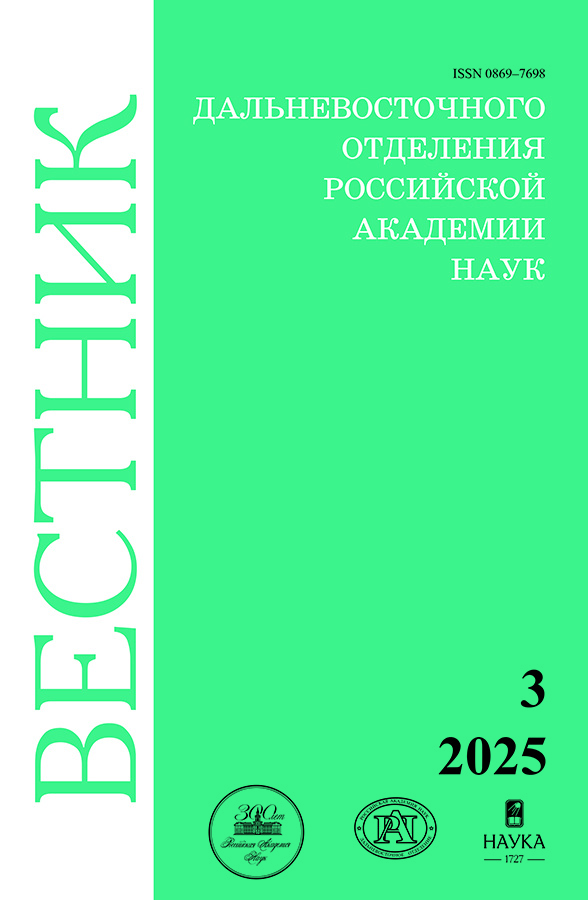Analysis of mountain waves’ characteristics obtained by high-resolution numerical modeling on Eastern Siberia and Russian Far East
- Authors: Verbitskaya E.M.1, Romanskiy S.O.1
-
Affiliations:
- Far Eastern Regional Hydrometeorological Research Institute
- Issue: No 3 (2025)
- Pages: 16-28
- Section: Earth and Environment Sciences
- URL: https://modernonco.orscience.ru/0869-7698/article/view/688924
- DOI: https://doi.org/10.31857/S0869769825030028
- EDN: https://elibrary.ru/PLRGNS
- ID: 688924
Cite item
Full Text
Abstract
Forecasting of possible locations, intensity, vertical and horizontal propagation of mountain waves (MW) is one of the main problems to ensure flight safety. This is very important in the complete absence predictions’ methods on the territory of Russia in generally and, especially, in Far-Eastern region. Main problem of the MW forecasting is almost complete absence of MW observations and instrumental measurement of their characteristics. In the article, approach to conformity assessment of simulated MW parameters (location, intensity, vertical and horizontal propagation) to real characteristics which are approximately determined by satellite images of lenticular clouds (Sc и Ac lenticularis) and atmospheric sounding is presented. It is shown that characteristics of simulated MW by the Weather Research and Forecasting model with grid spacing of 1 km are close to actual values. Possibilities to calibrate parameters of simulated MW calculated on the 5-km grid by values obtained on 1-km grid are discussed.
Full Text
About the authors
Eugenia M. Verbitskaya
Far Eastern Regional Hydrometeorological Research Institute
Author for correspondence.
Email: werbaem@gmail.com
ORCID iD: 0009-0006-5776-9736
Candidate of Sciences in Geography, Leading Researcher
Russian Federation, VladivostokStanislav O. Romanskiy
Far Eastern Regional Hydrometeorological Research Institute
Email: khvrom@ya.ru
ORCID iD: 0000-0001-6613-6881
Candidate of Sciences in Physics and Mathematics, Senior Researcher
Russian Federation, VladivostokReferences
- Sharman R.D., Lane T. (Eds.). Aviation turbulence: processes, detection, prediction. Springer International Publishing; 2016. doi: 10.1007/978-3-319-23630-8.
- Barry R.G. Mountain weather and climate. Cambridge: Cambridge University Press; 2008. doi: 10.1017/CBO9780511754753.
- Vinnichenko N.K., Pinus N.Z., Shmeter S.M., Shur G.N. Turbulentnost’ v svobodnoj atmosphere = [Turbulence in free atmosphere]. Leningrad: Gidrometeoizdat; 1976. (In Russ.).
- Romanskij S.O., Verbickaja E.M. Sil’nye shkvalistye vetry v Juzhno-Sahalinske letom 2014 g. = [Strong gusty wind in Yuzno-Sakalinsk in summer of 2014]. Geosfernye Issledovanija. 2023;4:141–154. EDN: LZBUBM. (In Russ.).
- Verbickaja E.M., Krohin V.V., Romanskij S.O. Prognoz opasnyh dlja aviacii javlenij pogody na territorii Vostochnoj Sibiri i Dal’nego Vostoka Rossii = [Forecasting of severe weather events for aviation on the territory of Eastern Siberia and Russian Far East]. Trudy DVNIGMI. 2024;157:18–40. (In Russ.).
- Galway J.G. The lifted index as a predictor of latent instability. Bulletin of the American Meteorological Society. 1956;37:528–529. doi: 10.1175/1520-0477-37.10.528.
- Skamarock W.C., Klemp J.B. A time-split non-hydrostatic atmospheric model for research and NWP applications. Journal of Computational Physics. 2007;227(7):3465–3485. doi: 10.1016/j.jcp.2007.01.037.
- Fritts D.C., Lund A.C., Lund T.S., Yudin V. Impacts of limited model resolution on the representation of mountain wave and secondary gravity wave dynamics in local and global models. 1: Mountain waves in the stratosphere and mesosphere. Journal of Geophysical Research: Atmospheres. 2022;127. e2021JD035990. doi: 10.1029/2021JD035990.
- Fritts D.C., Lund A.C., Lund T.S., Yudin V. Impacts of limited model resolution on the representation of mountain wave and secondary wave dynamics in local and global models. 2: Mountain wave and secondary wave evolutions in the thermosphere. Journal of Geophysical Research: Atmospheres. 2022;127. e2021JD036035. doi: 10.1029/2021JD036035.
- Feltz W.F., Bedka K.M., Otkin J.A., Greenwald T., Ackerman S.A. Understanding satellite-observed mountain-wave signatures using high-resolution numerical model data. Weather and Forecasting. 2009;24:76–86. doi: 10.1175/2008WAF2222127.1.
- Wilms H., Bramberger M., Dörnbrack A. Observation and simulation of mountain wave turbulence above Iceland: turbulence intensification due to wave interference. Quarterly Journal of the Royal Meteorological Society. 2020;146:3326–3346. doi: 10.1002/qj.3848.
- Xia G., Draxl C., Raghavendra A., Lundquist J.K. Validating simulated mountain wave impacts on hub-height wind speed using SoDAR observations. Renewable Energy. 2021;163:2220–2230. doi: 10.1016/j.renene.2020.10.127.
- Eckermann S.D., Lindeman J., Broutman D., Ma J., Boybeyi Z. Momentum fluxes of gravity waves generated by variable Froude number flow over three-dimensional obstacles. Journal of Atmospheric Sciences. 2010;67:2260–2278. doi: 10.1175/2010jas3375.1.
Supplementary files










